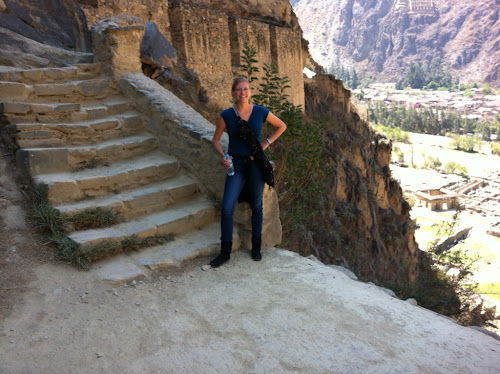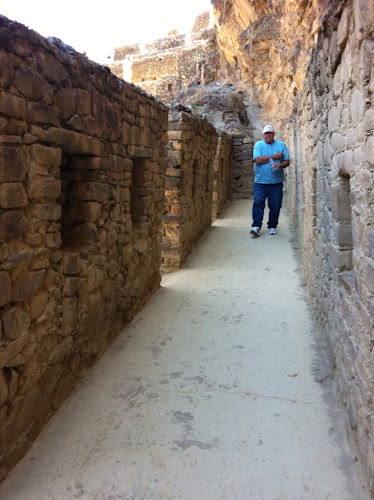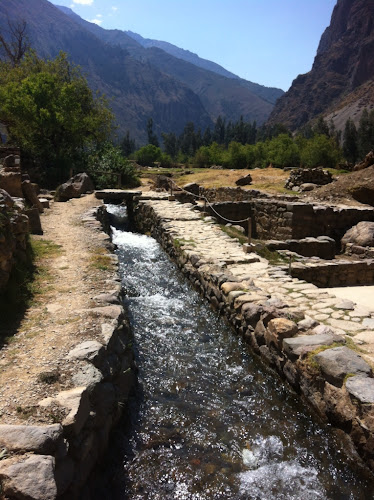They also valued education, both intellectual and physical. To graduate from school at the age of 16, students had to pass a series of mental and physical tests that would leave some dead. That was okay, though, because the Incas were also fierce warriors, and if someone couldn't live through an end-of-course exam, how would they ever live through a battle?
The ruins at Machu Picchu and other places also show that the Incas were good farmers. They built terraces on the mountainside and experimented with crop genetics and different growing methods. In a place called Moray, there are ruins of terraced concentric circles. This allowed the Incas to test which plants grew best at which altitudes and with what amount of sunlight.
The Inca people also apparently had some pretty fantastic ways of cutting and carrying stone. The stonework at Machu Picchu, especially on the the king's house and the temples, is amazing. No one knows how they did it. The town itself is located atop a natural quarry, so that helped, but it is still amazing to think of how they managed such well-done construction so long ago.
While the stone construction done by the Incas at Machu Picchu is incredible, maybe I was more impressed by the natural mountain formations. I can see why the Incas chose to build Machu Picchu were they did. It is a location that feels special, spiritual. I could have stared off into the mountains all day. Except that I was getting sunburned.
The Incas worshipped the sun and the moon, not as gods but as idols. The women studied the moon. The men studied the sun.The ruins sit between four mountains. A sun dial at the highest level was positioned to be aligned with these four peaks as well as the four cardinal directions. They used moon mirrors -- small circular bowls of water built into the floor -- to see the reflections of solar and lunar eclipses. Sun shining through windows built into the Temple of the Sun marks the summer and winter solstices.
American Hiram Bingham first discovered Machu Picchu in 1911. He was looking for the lost city of the Inca, called Vilcabamba. As he was traveling around Peru, he stopped in a village and asked if he could spend the night. The next day the villagers offered to take him to their other homes at the top of the mountain. They took him to the remains of Machu Picchu. Can you imagine his reaction? He thought he had found the lost city, but it turns out that it was discovered later somewhere else.
Today, as many as 2,500 people from around the world visit Machu Picchu every day via a winding dirt road that leaves from the relatively new town of Aguas Calientes. Yesterday I was one of those visitors, and here are the photos I took:
My dad and me:
 |
| Sun dial |
| These structures originally had thatched roofs: |
| Sun dial |






























































